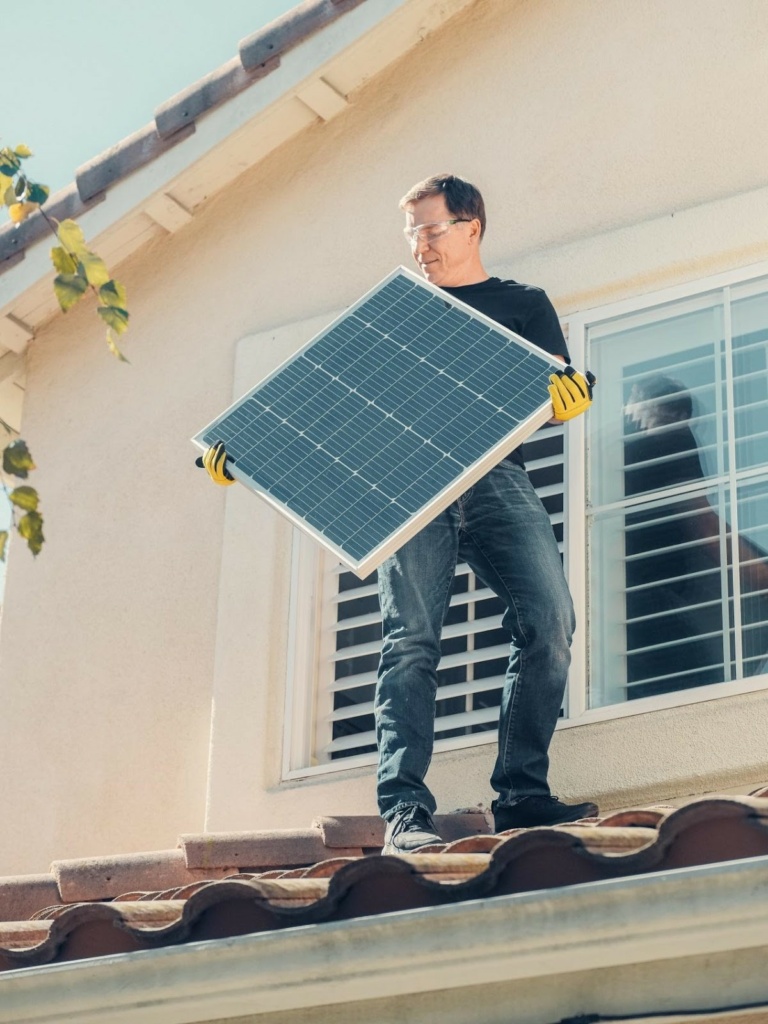If you want to buy solar panels, you should know how much they will cost. You will need to consider the up-front investments and the long-term savings. You should also be aware of the Tax credits that solar panels can give you. Purchasing a solar panel is not only good for the environment, it also makes sense financially.
Calculating the cost of solar panels
If you are considering installing solar panels on your home, you may be wondering about the solar installation cost and if it will be worthwhile in the long run. First, you need to determine how much energy your home uses on a monthly basis. This can be difficult to estimate, even if you are an engineer.
In addition, there are many factors to consider, including the location and orientation of your home. For example, a home that is mostly on a south-facing roof will receive the most benefit from renewable energy.
The savings you can expect from renewable energy panels over a 25-year period can be much higher than the price of installation alone. This is because the price of renewable energy panels can be added to your home mortgage or to a renewable energy loan.
Upfront costs of solar panels
The initial up-front investments required for renewable energy panels vary. Renewable energy panels are typically priced based on a homeowner’s electrical demand, which varies from one state to another. In addition, labor prices vary from provider to provider.
While renewable energy panels can be worth a lot, there are incentives available to help offset these expenses. In some cases, renewable energy panels are eligible for federal tax credits, which can help cut installation prices by up to 30%. Click here for more information. Additionally, homeowners may be able to sell excess renewable energy back to the grid for a profit.
Commercial renewable energy installations can be worth between $43,000 and $175,000, depending on the number of panes needed. On average, businesses can recover about 45 percent of the costs of renewable energy panes within the first year.
The renewable energy payback calculator also provides estimates of projected savings for the next 20 years. There are a few other things to keep in mind before installing renewable energy panes.
Before installing renewable energy panes, calculate how much you pay for your current electricity bill. Log into your electric company account and add up the average of the last few months of your electricity bills. Then, add in seasonal temperature changes and other cost fluctuations.
Long-term cost of solar panes
If you’re considering solar energy for your home, you need to consider the long-term cost of solar energy. Click the link: https://www.energy.gov/solar for more information. Installing these panes is not cheap, and you’ll probably need to take out a specialized loan to finance the project.
But even if the upfront cost is relatively low, you need to compare it to the amount you’ll be saving on electricity over the next 25 years. This cost is known as the levelized cost of energy, and it includes the installation costs as well as the electricity you’ll be producing. This total cost is adjusted for inflation.
The long-term cost of these products varies based on a number of factors, including the size of your home, insolation in your area, and your energy consumption. Gathering this information will help you determine whether this type of energy is a good option for your home.
In areas with lots of sunlight, solar installation can be the most affordable option. The higher the exposure to sunlight, the more energy your solar panels will be able to convert.
Tax credits for solar panes
Tax credits for sun-powered panes help to offset the cost of installing a sun-powered energy system on your property. Under certain conditions, you can claim up to 30% of the cost of your sun-powered system as a tax credit. The tax credit can roll over to the next fiscal year if you don’t use the entire amount in one year.
The federal tax credit for sun-powered panes is based on the total value of your sun-powered power system, and the year you install it will determine if you qualify. Since the sun-powered tax credit was created by the Energy Policy Act, its value has fluctuated. Its current value is 30%, but this could change again in the near future.
Tax credits for sun-powered panes are available for both commercial and residential installations. The government has set aside $2 billion in funds for such offsets. In addition to a tax credit, you may be eligible to get a subsidized loan from the state or a local utility. Your installer will know about any programs that might be available to you.
Average lifespan of sun-powered panes
Cleaning your sun-powered panes regularly will ensure that they work as long as possible. If leaves or other debris are covering them, you will need to regularly remove them to maximize their efficiency.
Also, bird droppings and other debris may cause corrosion, reducing their lifespan. Click here for more information about corrosion. Debris can also serve as a nesting spot for insects. Clean your sun-powered energy sources regularly to remove all potential threats and improve their efficiency.
While many manufacturers guarantee sun-powered panes for up to 30 years, you should be aware that their lifespans will depend on your local conditions and personal preference.

